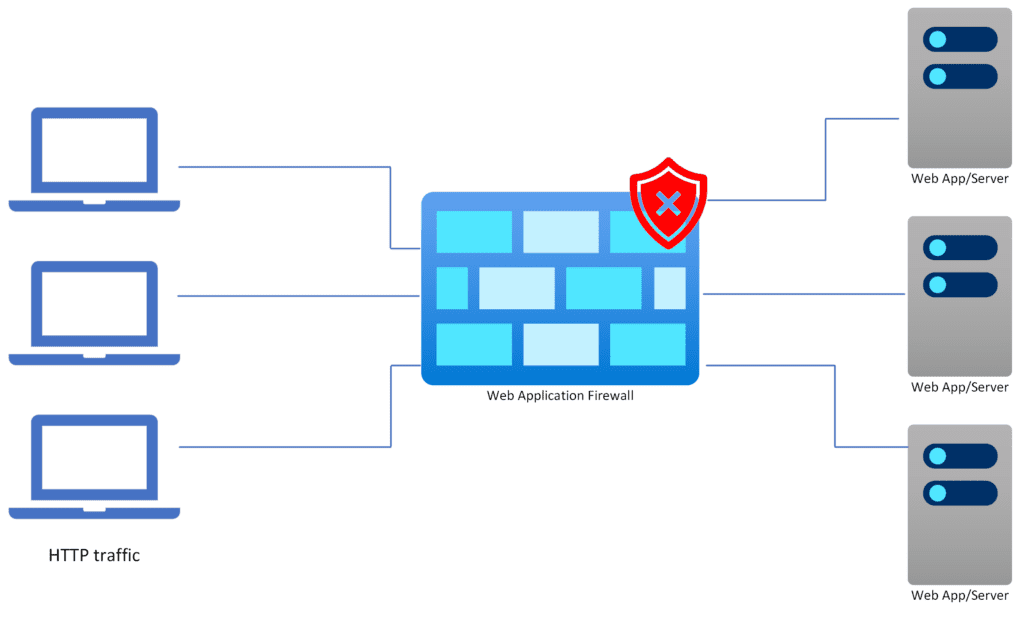In today’s interconnected digital landscape, every website is a potential target. Imagine your website, the face of your business, constantly bombarded by malicious requests, data breaches, and attempts to disrupt your services. Scary, right? That’s where web application firewalls (WAFs) come into play.
Think of a WAF as your website’s personal bodyguard, meticulously examining incoming traffic and filtering out anything suspicious before it can reach your server. It’s a crucial security measure that protects your website, your data, and your reputation from a wide array of online threats.
This article will delve into the world of web application firewalls, exploring how they work, the benefits they offer, and the key considerations for choosing the right WAF for your specific needs. Prepare to understand how to fortify your online presence and safeguard your valuable assets in the ever-evolving threat landscape.
Web Firewall Applications: Your Site’s First Line of Defense
In today’s digital landscape, websites face a barrage of cyber threats. Think of your website as a castle; a web firewall application acts as its formidable gate, carefully scrutinizing every visitor seeking entry.
It’s more than just a basic security measure. This system analyzes incoming web traffic, identifying and blocking malicious requests before they reach your server.
Effectively, a web firewall application is a shield against common attacks like SQL injection, cross-site scripting (XSS), and distributed denial-of-service (DDoS) attempts. Protection is key to sustained operation!
By implementing this safeguard, you’re not only protecting your data but also maintaining user trust and ensuring your online presence remains secure and available. It’s an investment in your business’s future.
Without this digital sentinel, your website becomes an easy target, potentially leading to data breaches, financial losses, and reputational damage. Don’t wait for a breach to happen.
These web firewalls are evolving rapidly to meet emerging threats. Regular updates and proper configuration are necessary for maximum defense and effectiveness.
Understanding the Core Functionality
At its heart, a web firewall application functions as a reverse proxy. All incoming traffic is channeled through it, allowing the system to inspect the requests before forwarding them to your server.
This inspection process involves analyzing the HTTP/HTTPS headers and payload for patterns indicative of malicious activity. If something looks suspicious, it is blocked.
It applies a set of rules, often based on established security standards like the OWASP Top Ten, to filter out harmful requests. Configuration is often based on OWASP.
The power of these apps lies in their ability to identify and neutralize threats in real time, preventing them from ever reaching your web application. It acts like a bouncer at a club.
Modern firewalls can also learn and adapt, using machine learning to identify new and evolving attack patterns. This ensures a dynamic defense against constantly changing threats.
By monitoring traffic patterns and identifying anomalies, the app can proactively block suspicious activity, further enhancing your website’s security posture. Anomaly detection helps.
Types of Web Firewall Applications: A Quick Overview
There are several deployment models for web firewall applications, each offering unique advantages and considerations. Selecting the appropriate type depends heavily on your needs.
One popular option is a hardware-based firewall, which sits directly in front of your web server, providing a physical barrier against attacks. It offers high performance and low latency.
Alternatively, software-based firewalls are installed directly on your server, offering a more flexible and cost-effective solution. These are usually easier to manage.
Cloud-based firewalls, also known as Web Application Firewalls (WAFs), are hosted in the cloud, offering scalability, ease of management, and automatic updates. Think of it as Software as a Service (SaaS).
Each type requires different levels of expertise for configuration and maintenance. Consider your resources and expertise when choosing the right fit.
Ultimately, the best choice depends on your budget, technical capabilities, and specific security requirements. Assess your individual needs to determine a good fit.
Benefits of Implementing a Web Firewall Application

The advantages of employing a web firewall application extend far beyond just basic protection. It brings peace of mind.
It significantly reduces the risk of data breaches, safeguarding sensitive information and protecting your customers’ privacy. It keeps your data safe.
By preventing downtime caused by attacks, it ensures your website remains available and accessible to users. This is important for business continuity.
Furthermore, it helps you comply with industry regulations and security standards, avoiding potential fines and legal liabilities. Compliance is a big win.
A protected website builds trust with your customers, enhancing your brand reputation and fostering long-term relationships. Customers care about security.
It can also improve website performance by filtering out malicious traffic and reducing the load on your server. Better performance and security!
Choosing the Right Solution: Key Considerations
Selecting the optimal web firewall application demands careful evaluation of several important criteria. Don’t rush into the decision!
Evaluate the app’s ability to detect and prevent various types of attacks, including OWASP Top Ten vulnerabilities. Make sure it covers the basics.
Consider its ease of use and management, including the availability of a user-friendly interface and comprehensive documentation. User friendliness counts.
Assess its scalability to ensure it can handle your website’s traffic volume and adapt to future growth. Scalability is key for growth.
Check the vendor’s reputation and track record, including their commitment to providing timely updates and support. Look for good reviews.
Finally, compare pricing models and features to find a solution that fits your budget and meets your specific needs. Get the most for your money!
Regularly review and update your chosen firewall to remain ahead of the threat landscape. Static security is weak security.